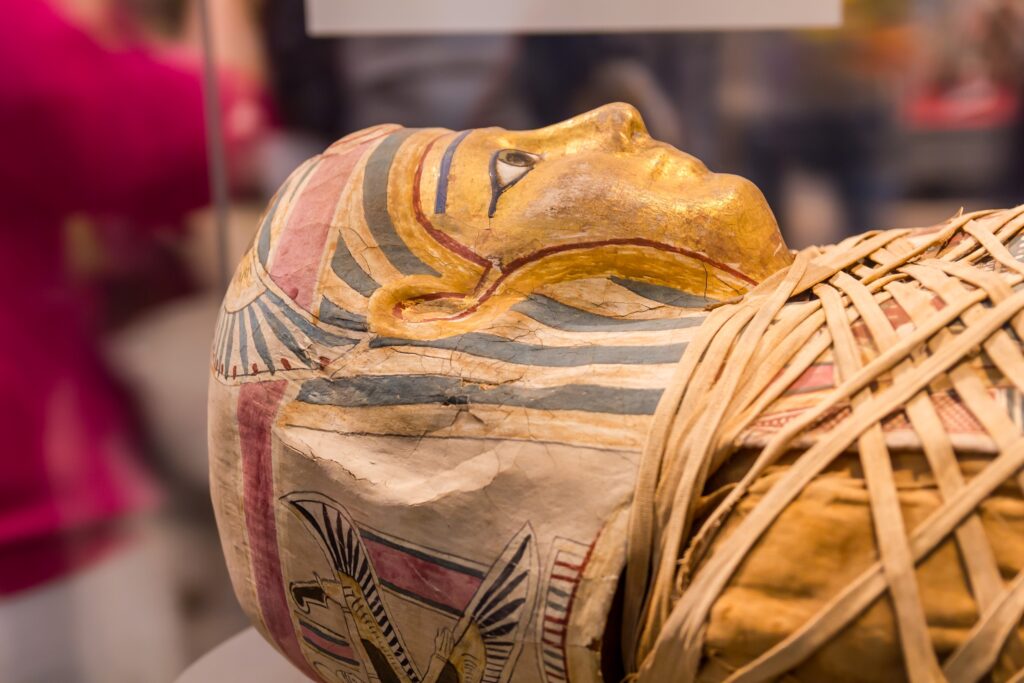A mysterious mummy known as “Bashiri,” also called the “Untouchable,” continues to puzzle Egyptologists over a century after its discovery.
British archaeologist Howard Carter uncovered the mummy in 1919, three years before his famous discovery of Tutankhamun’s tomb.
The ancient remains rest in the Valley of the Kings, near Luxor, and experts believe it dates back to the Ptolemaic period.
What sets Bashiri apart is the unique embalming method. No other known mummy shares this exact fabric wrapping technique.
Specialists describe the wrapping as intricate and pyramid-like, forming geometric patterns across the face of the preserved body.
The mummy likely belonged to a high-status individual, based on the exceptional precision and style of mummification.
Still, experts refuse to unwrap the body, fearing they would destroy the only example of this embalming method ever found.
Science Without Touch: Decoding Bashiri Through Technology
Since physical contact may irreparably damage the mummy, researchers rely entirely on non-invasive imaging to learn about it.
CT scans and X-rays reveal that Bashiri was a 167-centimetre-tall man, mummified with remarkable care and symbolism.
Specialists link the remains to the 2nd or early 3rd century BCE, a time when mummification reached its peak artistry.
These scans uncovered decorative elements, such as a chest ornament with hawk-headed beads, symbols of wealth and power.
Bashiri’s bodice displays sacred scenes, including the deceased on a bed, flanked by goddesses Isis and Nephthys.
Images of Anubis, god of the dead, appear on the foot coverings, reinforcing the person’s probable elite status.
Despite these findings, scholars have not confirmed the mummy’s name, only spotting a hastily scribbled tomb inscription.
That name might read “Bashiri” or “Neno”, but so far, no one has definitively matched either to a known individual.
Preserving the Mystery: A Mummy Wrapped in Silence
Historians agree that unwrapping Bashiri could yield answers, but it would destroy irreplaceable historical and scientific value.
Instead, they pursue ongoing non-destructive research, searching for hidden inscriptions, biological data, and artifacts inside the wrappings.
Experts interpret the symbolic items wrapped into the body as signs of this person’s prestige and spiritual significance.
The intricate beadwork, the divine imagery, and the unparalleled fabric technique suggest Bashiri held extraordinary societal status.
Still, scholars remain cautious, committed to preserving the mummy’s integrity, even as the mystery continues to stir global fascination.
Until a breakthrough occurs, Bashiri’s identity and story remain concealed, silently guarded by ancient cloth and sacred symbols.
And so, the 2,300-year-old enigma lies untouched in the Egyptian Museum in Cairo, still watching time pass, hidden in plain sight.


